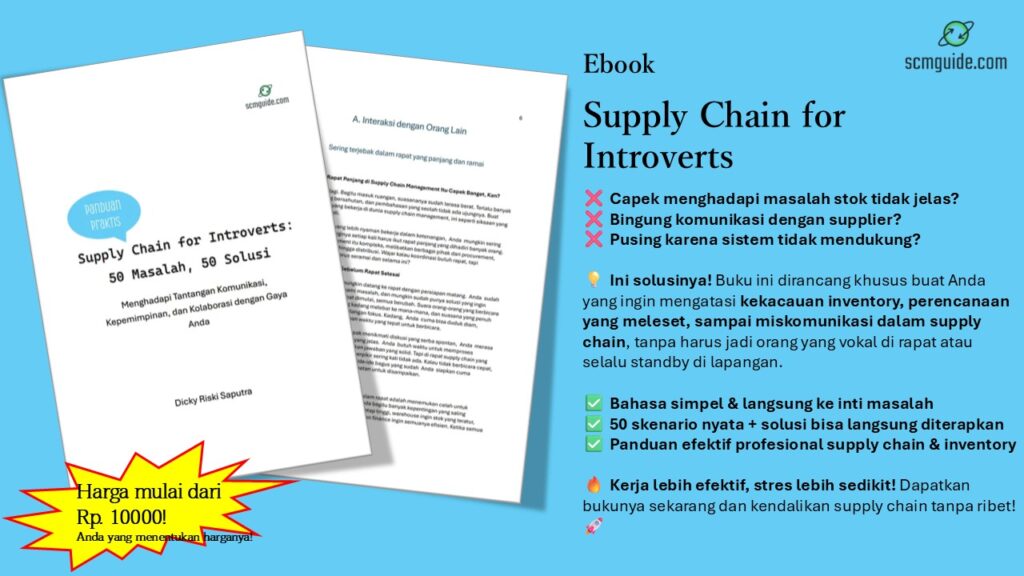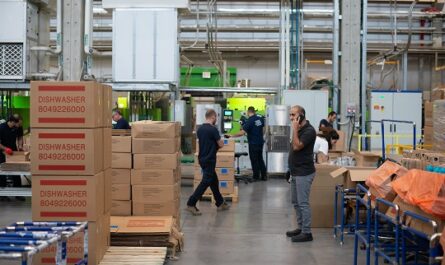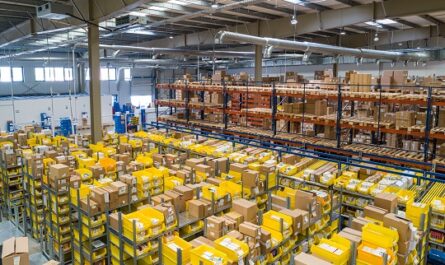In today’s ever-changing world of supply chain management, it’s crucial for companies to focus on both efficiency and sustainability. Across the globe, organizations are realizing the significance of reducing waste, not just in terms of physical products but also in the day-to-day decisions made throughout the supply chain process.
Traditionally, waste has been seen as something harmful, tied to specific activities. However, when we look more closely, we find that even small, seemingly unimportant actions can contribute to wasteful practices.
This article dives into the idea of waste in supply chain management, exploring how actions that lack purpose not only waste resources but also negatively impact the overall productivity of the supply chain.
Before we go further into this topic, don’t forget to follow my LinkedIn account. You’ll get more helpful insights on supply chain management there.
Table of Contents
Understanding Waste in Supply Chain Management
In supply chain management, we often link waste to obvious losses like defective products, excess inventory, and inefficient processes.
But if we take a wider view, waste includes any resource—whether it’s time, energy, or materials—that doesn’t add value to the final product or service.
Embracing this broader perspective helps us see that waste isn’t just about the usual suspects; it also includes actions and decisions that, while not harmful, don’t really contribute meaningfully to the overall efficiency of the supply chain.
The Nature of Meaningless Actions
Meaningless actions in the context of supply chain management are tasks, processes, or decisions that don’t align with the main goals and objectives of the supply chain.
This can include things like unnecessary paperwork, redundant processes, misguided investments, or misallocation of human resources.
The tricky part about meaningless actions is that they might not seem harmful right away, but their impact adds up over time, affecting the efficiency of the supply chain in a significant way.
Resource Utilization and Meaningless Actions
One major reason why meaningless actions contribute to waste in supply chain management is the inefficient use of resources.
In any supply chain, resources like time, labor, and materials are limited and valuable. When these resources are spent on tasks that don’t add value to the final product or service, they are essentially wasted.
This misallocation prevents the supply chain from operating at its best, leading to increased costs and reduced overall efficiency.
For instance, imagine a situation where employees dedicate a significant amount of time to redundant paperwork that doesn’t improve the quality or efficiency of the final product.
The time and effort spent on such meaningless tasks could have been better utilized for more valuable activities, such as enhancing production processes or improving product quality.
You might also like:
- Balancing Flexibility and Efficiency in Manufacturing for Better Supply Chain Management
- How Your Personality Affects Your Performance in Supply Chain Management
The Domino Effect on Efficiency
When meaningless actions persist, they set off a chain reaction that affects the entire supply chain.
As resources get redirected to tasks that don’t add value, the efficiency of the supply chain diminishes. Bottlenecks may form, production timelines could be delayed, and the ability to respond to market demands may suffer.
Essentially, the cumulative impact of meaningless actions undermines the supply chain’s capacity to adapt, innovate, and tackle the dynamic challenges of the business environment.
Moreover, this ripple effect goes beyond immediate operational consequences.
In a globalized and interconnected supply chain ecosystem, inefficiencies caused by meaningless actions can echo through partners, suppliers, and customers.
This interconnectedness underscores the importance of a comprehensive approach to waste reduction that addresses not only the obvious drawbacks but also the subtler, seemingly harmless actions that drain the vitality of the supply chain.
Environmental Implications of Meaningless Actions
Beyond immediate operational consequences, meaningless actions in supply chain management also have environmental implications.
Inefficient use of resources, such as excessive energy consumption or unnecessary transportation, adds to the carbon footprint of the supply chain.
In an era where sustainability is a crucial consideration for businesses and consumers, the environmental impact of meaningless actions cannot be overlooked.
Take, for example, the unnecessary transportation of goods between different points in the supply chain. If these movements don’t contribute value to the final product or service, they represent a form of waste.
This not only adds to carbon emissions but also introduces unnecessary costs to the supply chain.
Addressing these meaningless actions requires a comprehensive assessment of the supply chain’s environmental impact and a commitment to sustainable practices.
You might also like:
- Mastering Success: How Delegating Powers Up Your Supply Chain Strategy
- Winning in Supply Chain: Competence and Attitude Matter Most
Strategies for Mitigating Meaningless Actions in Supply Chain Management
Recognizing and addressing meaningless actions in supply chain management is a complex yet essential task. It involves a mix of strategic planning, process optimization, and a cultural shift within the organization. Here are some strategies to reduce meaningless actions in the supply chain:
- Process Optimization and Automation: Embrace technology and automation to simplify processes and eliminate unnecessary tasks. This not only boosts efficiency but also minimizes the chances of meaningless actions.
- Continuous Improvement Culture: Cultivate a culture of continuous improvement. Encourage employees at all levels to identify and remove tasks that don’t contribute value to the supply chain.
- Data-Driven Decision Making: Use data analytics to pinpoint inefficiencies and areas where resources are misused. Data-driven insights provide a clear picture of how certain actions impact overall supply chain performance.
- Supply Chain Visibility: Improve visibility across the supply chain to detect and address meaningless actions. Better visibility enables smoother coordination and communication, reducing the likelihood of non-value-adding activities.
- Collaboration and Communication: Promote collaboration and open communication among supply chain partners. This ensures everyone is aligned with overarching goals, minimizing actions that don’t contribute meaningfully to the supply chain.
- Sustainability Integration: Integrate sustainability into decision-making processes. Evaluate the environmental impact of supply chain activities and prioritize initiatives that enhance both efficiency and sustainability.
- Employee Training and Empowerment: Provide training programs to enhance employees’ awareness of how their actions affect the supply chain. Empower them to identify and address meaningless tasks in their daily work.
- Key Performance Indicators (KPIs): Establish meaningful KPIs aligned with the organization’s goals. Regularly evaluate and adjust these KPIs to ensure they reflect desired outcomes and discourage actions that don’t contribute value.
These strategies collectively contribute to a more efficient and purpose-driven supply chain, providing a foundation for fresh graduates to understand and contribute to waste reduction in supply chain management.
Conclusion
In conclusion, waste in supply chain management goes beyond traditional issues like defects and excess inventory.
Meaningless actions, those not aligned with the supply chain’s overarching goals, also contribute to waste by inefficiently using valuable resources.
The impact of these seemingly innocuous actions is extensive, affecting operational efficiency and environmental sustainability.
To address and mitigate meaningless actions, a comprehensive approach is needed, including process optimization, technology adoption, cultural shifts, and a commitment to sustainability.
Recognizing the interconnectedness of the supply chain ecosystem and the subtle ways waste can manifest allows organizations to build a more efficient, sustainable, and resilient supply chain.
In navigating the complexities of the modern business landscape, the importance of minimizing waste, in all its forms, cannot be overstated.
I hope you find it helpful!
Please share this article with your colleagues so they can also benefit. For more insights on supply chain management, follow my LinkedIn account. You’re free to use all articles on this blog for any purpose, even for commercial use, without needing to give credit.

 by
by 



